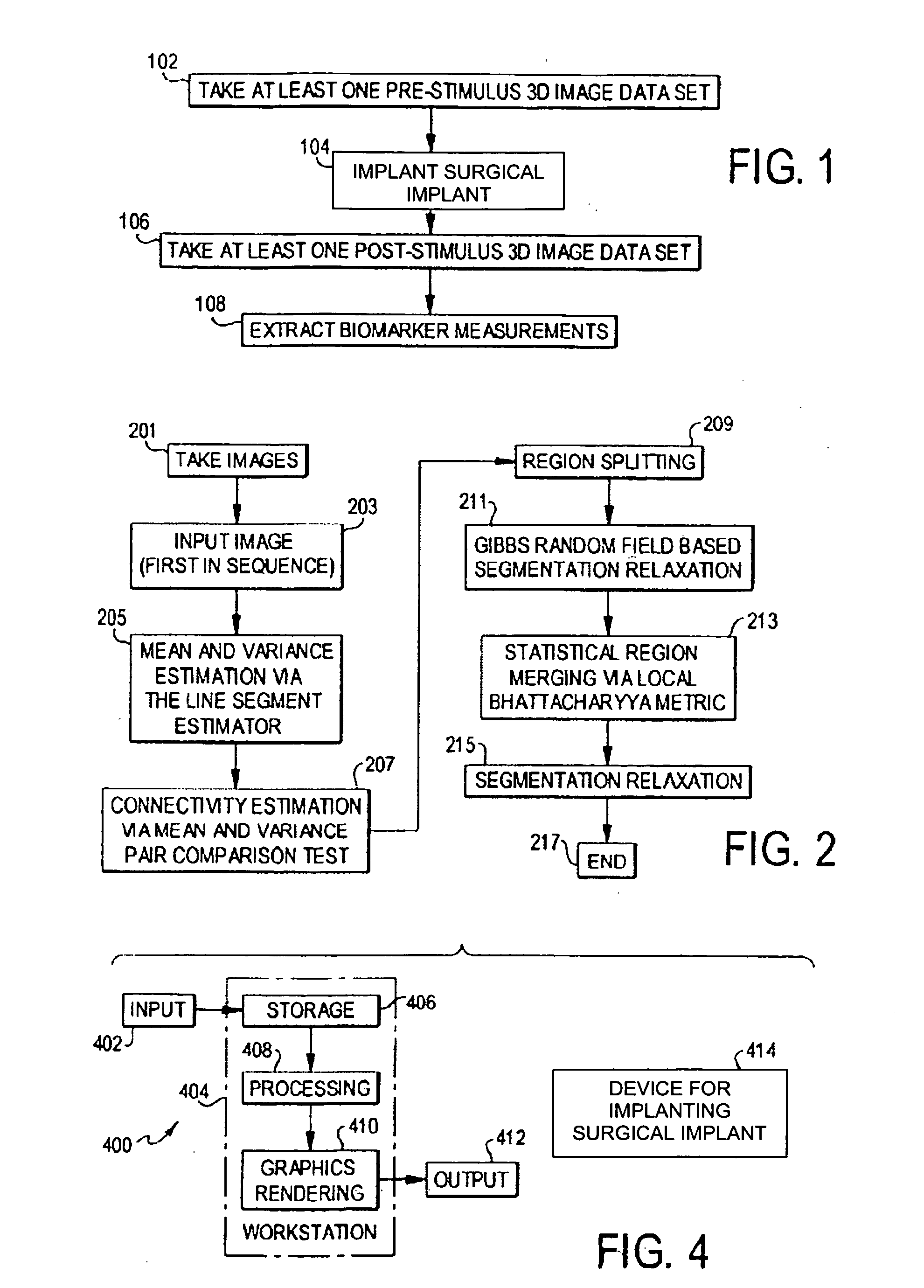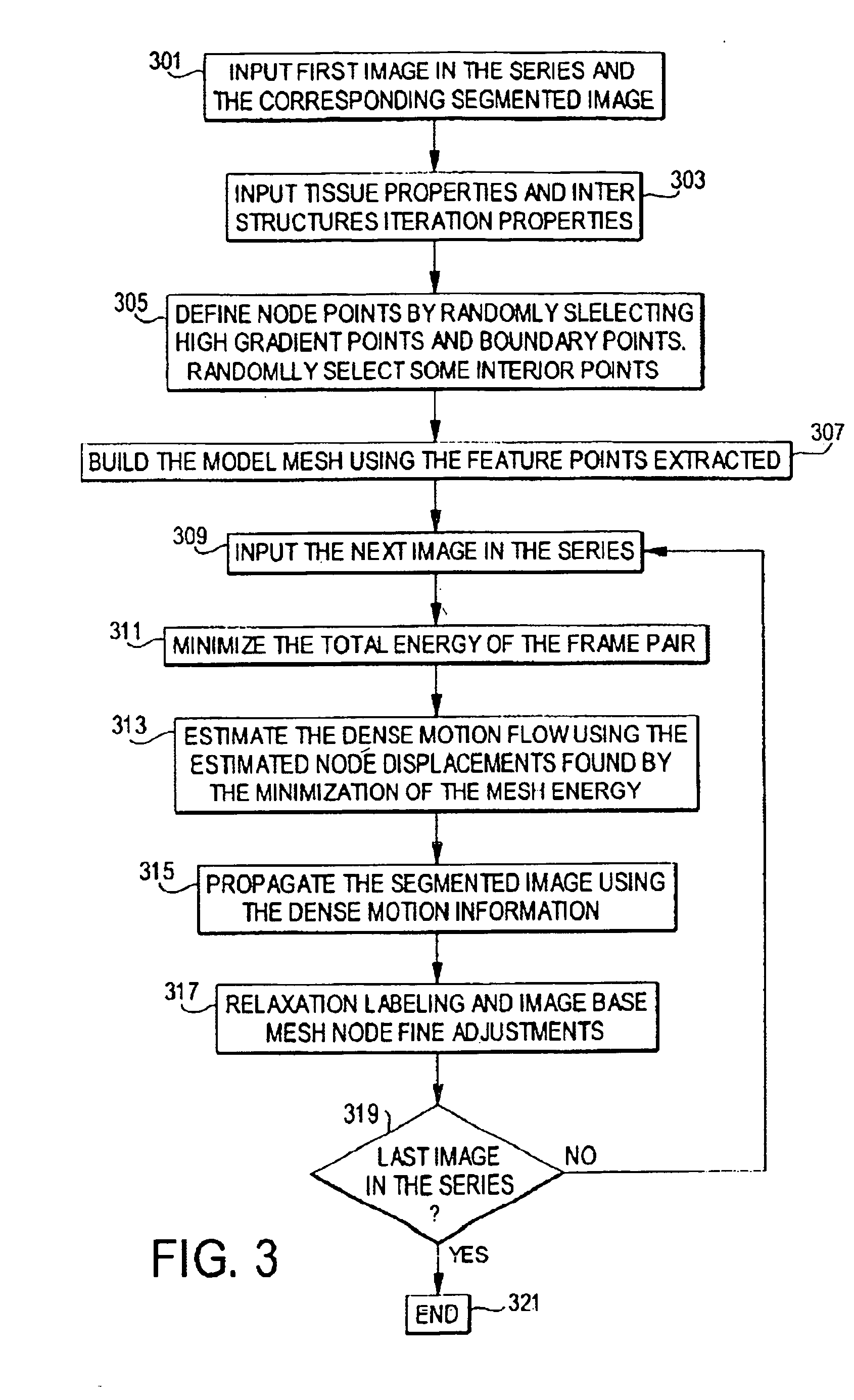Method and system for assessment of biomarkers by measurement of response to surgical implant
a biomarker and surgical implant technology, applied in the field of biomarker assessment by surgical implant measurement, can solve the problems of inability to accurately describe complex topology or shape in an accurate manner, limited resolution, and inability to accurately assess and quantify conventional measurements, etc., to achieve improved structure or function, improve the effect of function and high resolution
- Summary
- Abstract
- Description
- Claims
- Application Information
AI Technical Summary
Benefits of technology
Problems solved by technology
Method used
Image
Examples
Embodiment Construction
[0148] A preferred embodiment of the present invention will now be set forth in detail with reference to the drawings.
[0149] An overview of the operational steps carried out in the preferred embodiment is shown in FIG. 1. In step 102, one or more 3D image data sets are taken in a region of interest in the patient before the implantation of a surgical implant. The 3D image data sets can be taken by any suitable technique, such as MRI; if there are more than one, they are separated by time to form a time sequence of images. In step 104, a surgical implant is implanted into a portion within the region of interest constituting the biomarker. In step 106, one or more 3D image data sets are taken again, as in step 102, except after the implantation. In step 108, the biomarker measurements are extracted from the image data sets taken before and after the implantation. With those measurements, the reaction of the biomarker to the surgical implant can be determined.
[0150] The extraction of...
PUM
 Login to View More
Login to View More Abstract
Description
Claims
Application Information
 Login to View More
Login to View More - R&D
- Intellectual Property
- Life Sciences
- Materials
- Tech Scout
- Unparalleled Data Quality
- Higher Quality Content
- 60% Fewer Hallucinations
Browse by: Latest US Patents, China's latest patents, Technical Efficacy Thesaurus, Application Domain, Technology Topic, Popular Technical Reports.
© 2025 PatSnap. All rights reserved.Legal|Privacy policy|Modern Slavery Act Transparency Statement|Sitemap|About US| Contact US: help@patsnap.com



